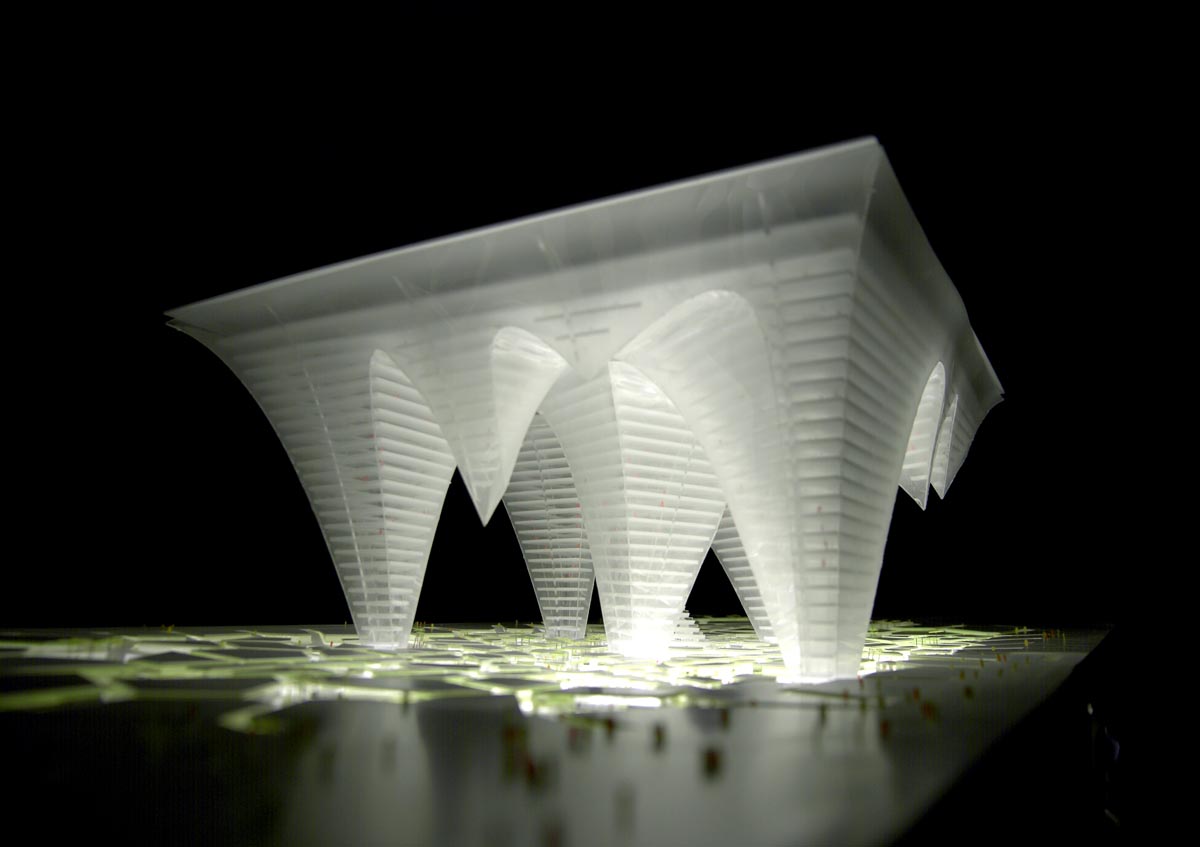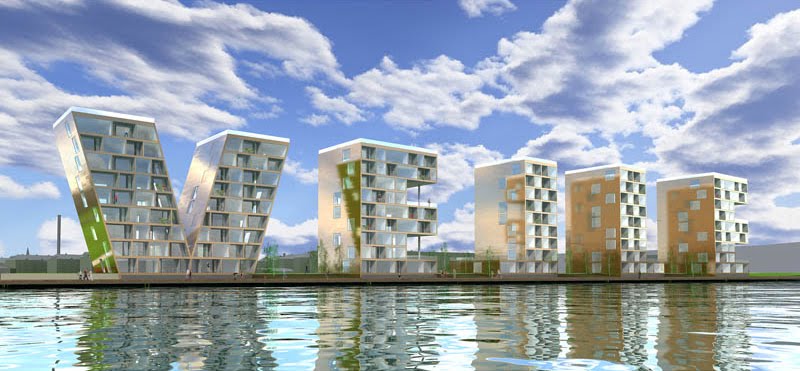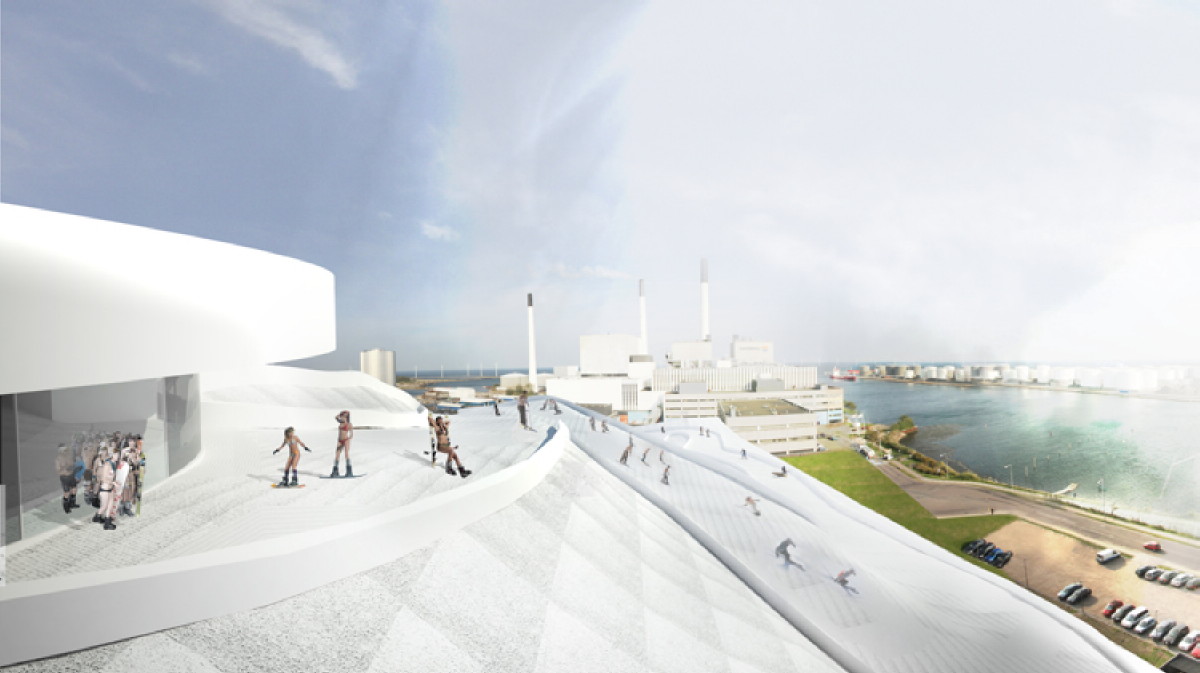With the smashing success of the Danish television series Borgen and The Economist’s recent proclamation of the Nordic countries as Western politicians’ Next Supermodel, the spotlights seem to be on Copenhagen in recent years. Also in architecture we see this tendency with the recent stardom of archi-kid Bjarke ‘Yes is More’ Ingels and the group of young hip-and-happening architectural offices around him, culminated in last year’s book The New Wave in Danish Architecture.
Following the 90’s success of the SuperDutch, in the 2000’s this group of young Danish architects (who almost without exception have worked a couple of years at either OMA or MVRDV) seems to take the world stage with a clever mix of clear-cut concepts, big statements and flashy renders, giving them a huge popularity among students and young architects worldwide.
Most known by BIG’s bombastic pseudo-intellectual phrases like ‘Utopian Pragmatism’, ‘Architectural Evolution’ and ‘Hedonistic Sustainability’, the general attitude of the group is that of a positivist and pragmatic approach to design. A New Pragmatism that is often needed in difficult financial times, but sometimes runs the danger of rubbing a little too close to commercialization, cheap marketing tricks and a non-critical attitude towards clients. Too often it becomes a cardboard-thick layer of social engagement and sustainable greenness, quickly designed by an army of interns. What is pragmatism and conceptualism worth when it ends up in over-simplified images like the VEJLE housing project? When public space is reduced to pushing the sloped roof down to the ground floor? When sustainability means skiing from a power plant? (see images below)
But just as Borgen shows us a deeper emancipatory struggle between public career and private care, what could be the underlying stream in contemporary architecture that sustains this New Wave? What makes those young offices drift towards the shores of simplification?
At the core of the problem we might find the canonization of concept and image, in a world where architecture – from third-year study projects to world-class international competitions – is mainly judged by their one-liner concept and fancy renders. In an architecture scene where the admiration of Koolhaas became so BIG, that we don’t see that a concept without its genius is just an empty shell. Resulting in a tsunami of jaw-dropping images that will never be built, or even worse, will be built in China exactly as in that fancy image. This is what Sam Jacob in a recent column calls ‘a stream of Photoshopped incontinence’ (Dezeen 2013). A push-and-pull architecture that is easily explained but hardly ever built; a story of social engagement that sells like hot cakes but melts like snow. Last December, William Curtis coined the term ‘Viagra Urbanism’, showing in the case of London’s high-rise how hollowed out concepts and seductive images can become a caricature of themselves:
“London has emerged as the epicenter of double-speak […] Renzo Piano’s Shard is yet one more pile of luxury accommodation and foreign investment promoted as if ‘giving’ something to civic life. A preposterous website asserts that this crushing and profiteering monster is inspired by historical church spires and the split masts of ships shown in Canaletto’s view of the Thames.” (AR July 2012)
This is the danger that threatens the young Danish architects of the New Wave if their success will solely be based on their taggy storylines or smooth renders. What if we stop believing that there is any relation between the promised architectural Walhalla and the urban reality it creates? What if we stop believing that diagrammatic arrows can solve real social problems?
And this is where the hope comes in. Because among the Danish offices that form the New Wave, there are signs that some offices develop a more true social engagement and critical academic view, like Berlin-Copenhagen based COBE who recently realized an interesting library in Nordvest, or Rotterdam-Copenhagen based Powerhouse Company with their recent critical publication ‘Shifts’. If young architects manage to adopt a more truly socially engaged and contextual architecture that is not only a smooth-talked concept, but also rooted in knowledge, craft and a critical attitude; we might have a bright future. Because when you have a truly good story, there is nothing wrong with telling it well.





